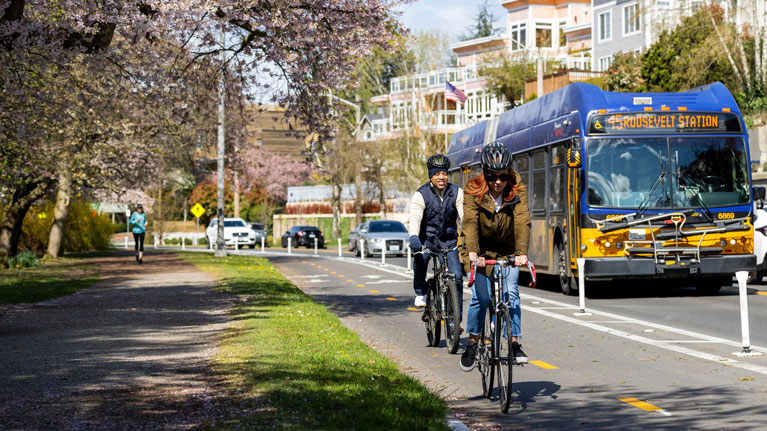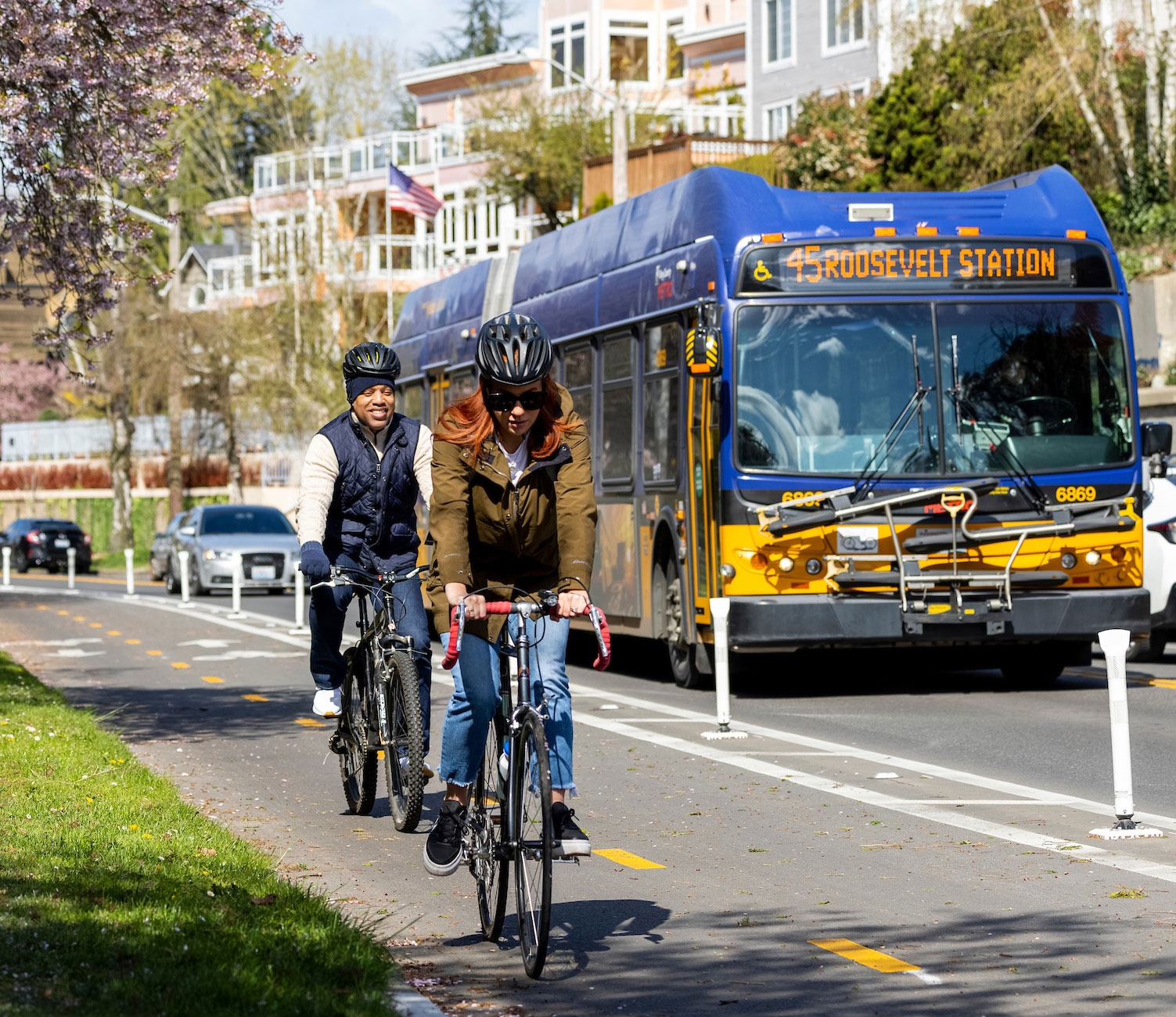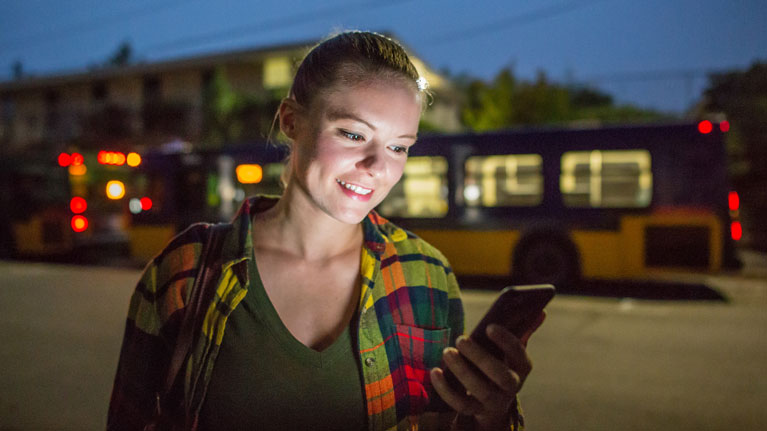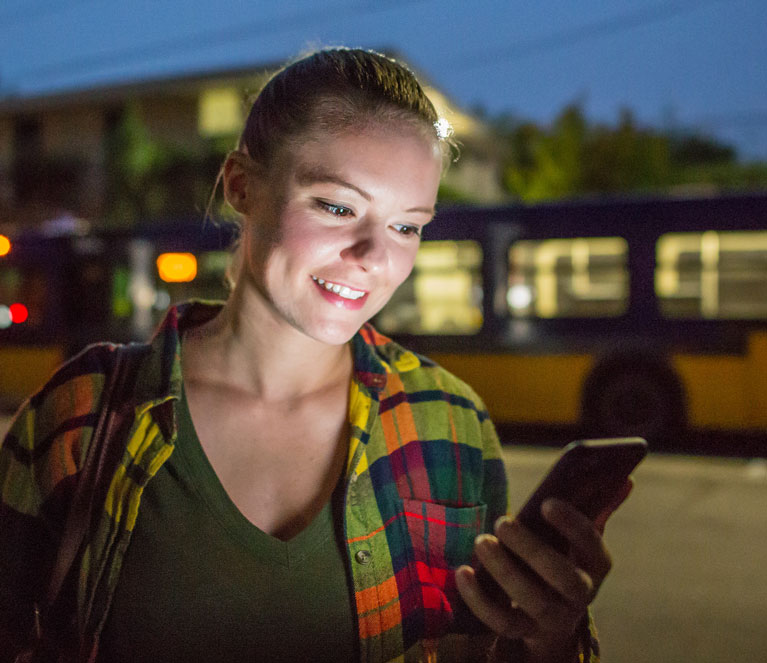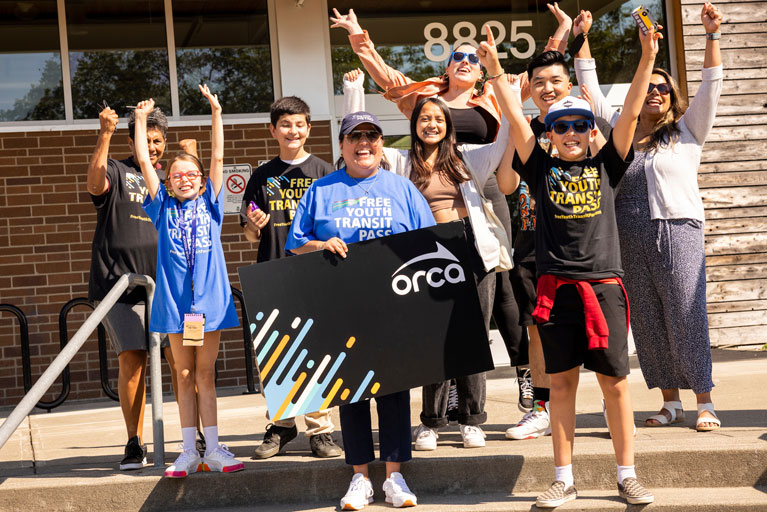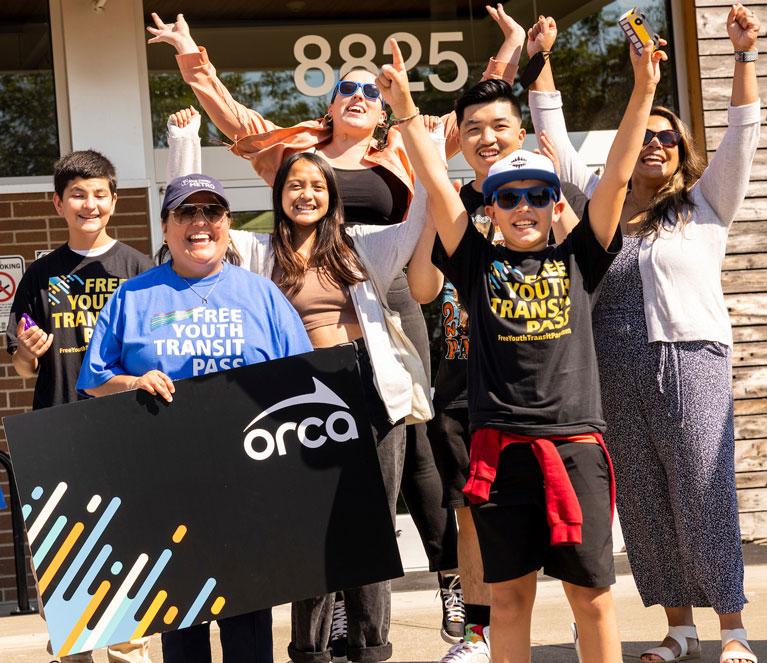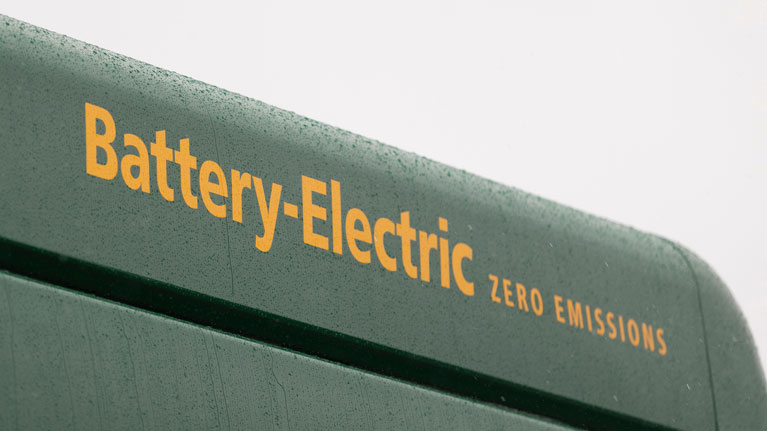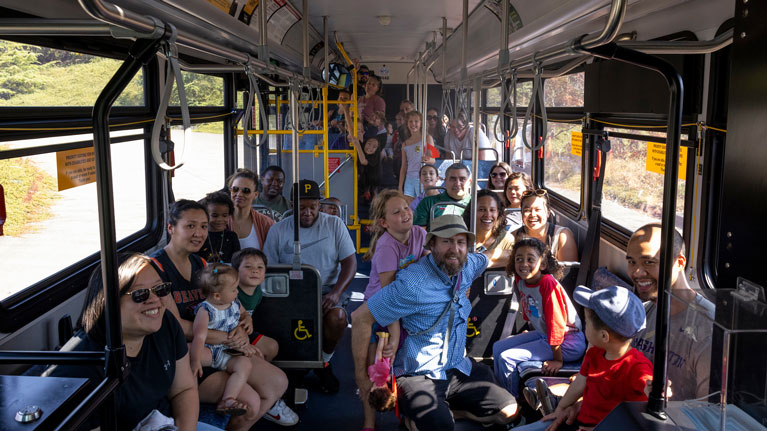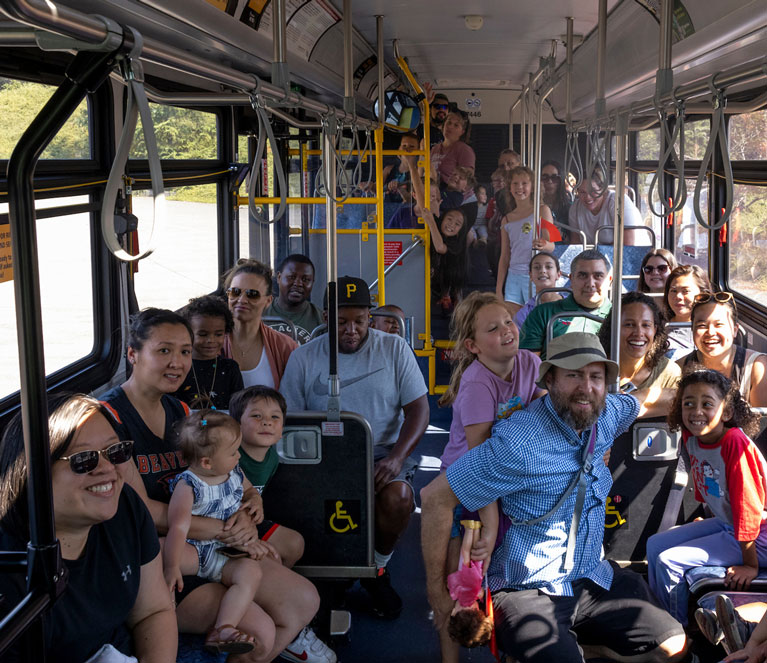The freedom to move
As transit leaders, we are entrusted with advancing a human right: the freedom to move. We connect people to community, education, entertainment, family, friends, jobs, medical care, museums, parks, shopping and more. We strive to make getting where you want to go accessible, affordable, reliable, safe, seamless and stress-free.
Transit is finally receiving the national attention it deserves because of the belated realization that the movement we make possible is the connective tissue upon which everything else depends. Businesses can’t fill job vacancies if people aren’t able to get to work. A person can’t attend school or receive vocational training without a way to get there. And health care relies on reliable transportation for medical professionals and patients alike.
Our charge as transit agencies must be to expand even further in the years ahead. Although our transit systems—and the cities, counties, and towns we serve—vary greatly, we are united by three strategic imperatives:
- How to prioritize audiences as we rebuild ridership.
- How to invest in community relations to guide us.
- How to ensure our environmental trajectory delivers a future worth inheriting.
Transit is the connective tissue upon which everything else depends.
The new daily riders
While we don’t know exactly what the future looks like, we do know that the car—whether gas or electric—is not the answer. We want to live, work and play in communities marked by greenery, pedestrian paths and birds chirping, not widening highways, parking superstructures and the din of traffic. We need a suite of options—across buses, bicycle lanes, on-demand services, rail and vanpools—that allow people to move freely based on their interests and abilities, rather than endlessly funneling cars into congested travel arteries.
Pre-pandemic trends toward more hybrid and work-from-home positions have increased exponentially since 2020. The result is that the profile of everyday riders has shifted permanently. While most temporary work-from-home roles have since shifted to a hybrid schedule, many individuals will never return to 100% in-person work. Generally, that means fewer riders, fewer fares and potentially less revenue to deliver the frequent, reliable service that customers require.
To rebuild ridership, we must continue to appeal to occasional commuters and invite riders to take transit to a limitless number of non-work destinations. But what’s even more important is that we invest resources into building a transit system that is attractive to the prospective customers who are already asking us for a ride. These customers tend to have lower incomes and—due to skyrocketing housing prices and the cost of living—cannot afford to live close to the rail lines and transit corridors that were often built decades ago. These future riders will benefit tremendously from affordable, reliable public transportation to and from opportunities and services.
But expanding service to these underserved customers is not as straightforward as adding a new bus route from neighborhood centers to the downtown core. These future riders live in areas that are less dense and more decentralized. Their frequent destinations are in no one direction. And their desired hours of travel must align with work shifts that can begin before dawn and go late into the night. The good news is that we, as transit agencies, don’t need to begin with knowing the answers, but rather to start the community conversations and commit to seeing this work through to fruition.
Community is king
Transit desperately needs new mobility solutions—especially first- and last-mile approaches for underserved residents—but these solutions won’t come from the heads of transit agencies. Not even the direction on which problems to prioritize may come from us. Instead, our role is to be facilitators and servant leaders to the communities we serve—and the communities we wish to serve. That takes resources, time and a roadmap that cannot be pre-written, but I promise that the learning and the payoff are worth it.
At King County Metro (Metro), we established a Mobility Equity Cabinet in 2019 to advise us on infrastructure and transit investments, new mobility solutions and how to engage communities in decision-making. We needed the voices of traditionally underrepresented perspectives of priority populations, which we define as people who (1) are Black, Indigenous or of color; (2) have low or no income; (3) have disabilities; and/or (4) are linguistically diverse. Across a number of months, we co-created a set of guiding principles and recommendations for centering equity and sustainability in Metro’s policies. Importantly, we paid members for their participation to acknowledge their expertise and time. Along the way, we gathered input from transit riders, the public (especially priority populations), regional partners, stakeholders, elected officials and employees. In 2020, the King County Council adopted the Equity Cabinet’s recommendations, called the Equity Framework. Then, in 2021, the Equity Framework and further co-creation work drove changes to Metro’s long-range planning documents to ensure that transit investments go where they are needed most. The Council was unanimous in approving these groundbreaking legislative updates.
In addition to agency-wide community advisors, Metro has an ongoing Access Paratransit Advisory Committee. We also regularly convene the Young Members of the Mobility Equity Cabinet. We seek to be in continuous contact with advocates, communities and neighborhoods—especially as we look to add, improve or revise service. When it comes to first- and last-mile solutions, for example, community engagement has guided us toward services that work the best for a specific area. Sometimes, that means Via to Transit, which provides an on-demand car trip between home and a transit hub for the same cost as a bus fare. Other times, a Ride Pingo to Transit van is better equipped to link riders between transit and a worksite.
King County Executive Dow Constantine also directed Metro to co-create with community where the stakes are highest. Following the murder of George Floyd in 2020 and our Executive’s acknowledgment of racism as a public health crisis, Metro began working with community members—especially priority populations—and employees to reimagine how to create a safe and welcoming environment on transit. After months of deep engagement, we shared recommended approaches with the King County Council informed by the insights of roughly 8,000 people, focusing on the BIPOC communities disproportionately impacted by inequitable safety and security policies and practices. Then, earlier in 2022, we began implementing pilot programs that respond to our community members’ strong desire for a compassionate and visible presence that shows up in the right way.
Sustainability
At Metro, we lead with equity, but it’s for good reason that our other two core values are safety and sustainability.
Safety is recognizing that the health and wellbeing of our customers and employees are paramount. Our mission is for everyone to get where they need to go in order to thrive, but nothing is more important than being safe and feeling welcome throughout that entire journey. Being a new arrival to this country, living with a disability, your gender identity, your sexual orientation or your ethnicity should not be a barrier to feeling secure when you ride with us. We have similarly high standards within our workplace—while acknowledging what we must do on our system and in our organization’s culture. We are fully engaged in both places as we strive to become a “beloved community.”
Compared to equity and safety, it can be tempting to delay or demote sustainability—especially when budgets are tight. However, the dire urgency of the climate crisis means we must do even more—and do it faster—to reduce greenhouse gas emissions and direct a culture shift before it’s too late. In recent years, King County has seen extreme weather like never before—from reduced rainfall and resulting wildfires to unprecedented snowstorms to weeks of heat in a region that didn’t require air conditioning. We know that the continuation of these trends will make all our other aspirations for a brighter, fairer future moot—and that the first to suffer severely will be our neighbors with the least resources and the fewest options.
While transit is already “green,” we have an opportunity to do even more to reduce pollution and to encourage technologies—and entire industries—to follow suit. For these reasons, Metro is converting its entire bus fleet—more than 1,400 strong—to zero-emission by the ambitious date of 2035. We have made similar commitments across our other transit modes and support vehicles. Earlier this year, we welcomed the first of our next-generation of 40- and 60- foot battery-electric buses into service, each with the ability to handle every type of terrain and to travel more than 140 miles on a charge.
In the second quarter of 2022, the Federal Transportation Administration (FTA) named Metro the nation’s most equitable transit agency in combatting climate change. They credited our agency- and county-wide ambitions and our equity lens. We intentionally prioritized neighborhoods with the worst pollution—which house a disproportionate number of BIPOC and low-income community members—for the new clean-air buses. We also brought the supporting bases and charging stations—and the accompanying family-wage jobs with benefits and a pension—to those areas.
If you want to go far, go together
I’ve seen how mobility benefits communities, and I’ve lived it, too. In my more than 30 years in transit, I know we’re not simply delivering a more affordable fare, increased frequency of service, a new bus route, translated schedules or an updated wheelchair securement system. Instead, when we improve transit, we expand opportunity.
During my childhood in south King County, transit was my family’s only option for getting from a place to a place. We were a family of four—Black, low-income, and raised by our mother, whose disability prevented her from driving.
Even so, my mother provided us with opportunities that would brighten our future. To get to those opportunities, we used transit. Those journeys took us to places in life far beyond what we could have ever imagined.
Some of those destinations included the schools in Seattle where I’d earn college admission. When I earned my degree, I knew exactly where I wanted to work and applied for every Metro job opening in the newspaper. I served in 14 positions before becoming General Manager.
To this day, transit is where I work, read, rest and reminisce. And whether it’s bus or rail, I still enjoy riding to a place. But place is never just a physical address. Place is socio-economic. Place is one’s position within society. Place is a specific condition. Place is a state of mind.
Growing up, our family’s ability to move by way of the transit system was life changing. Unfortunately, movement through the transit system was not always straightforward and efficient. My childhood transit system was not designed with input from family units of poor, Black, disability-challenged dreamers. Nor did the system intentionally look out for English-language learners and foreign-born dreamers. Still, transit helped to move this 10-year-old dreamer to a better place.
Imagine if transit had intentionally included the voices of historically marginalized and silenced communities in the planning process! What place would that bring us to—both personally and in our region? Guided by our communities, that imagined place is precisely where King County Metro is going.
I invite every transit agency to join us on this journey and to work together along the way.
About this article
Former King County Metro General Manager Terry White contributed this concluding chapter to Paul Comfort’s book, “Conversations on Equity and Inclusion in Public Transportation.”

 Translate
Translate
